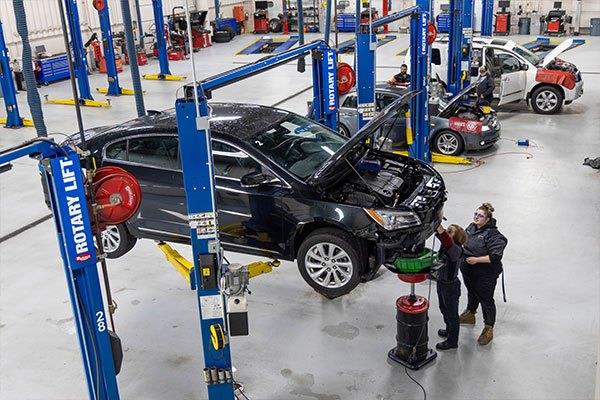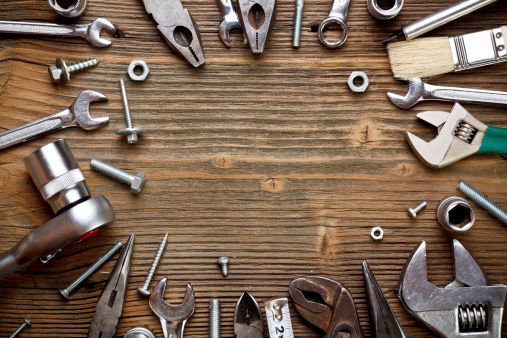
You should consider upgrading your old car with the latest technology. These days, you can find anything from parking sensors to Rearview cameras to a modern Touchscreen head unit for your car. There are also options that will be specific to your particular car. Take a look inside your vehicle and consider what upgrades it might need.
Rearview cameras
Despite the age of your car, you can retrofit it with new technology to make driving safer and more convenient. You don't need to sell your old car. Modern safety and convenience features can be added for a small cost. You can also DIY upgrades to your car. Continue reading to find out more. Here are some options to convert an old car into a modern vehicle.

Parking sensors
You might consider adding a rear-view camera to your car or parking sensors to it if you are considering purchasing a car. These safety features will reduce blind spots and help prevent cars from slipping in tight spaces. The best part is that you don't have to spend a fortune. You can get such systems from many manufacturers for less than $100. Here are some of the most important reasons why.
Touchscreen head unit
While a touchscreen head unit in an old car can be a complicated project, you may be surprised to learn that aftermarket versions have come a long way. The latest models offer climate control, Bluetooth, Wi Fi connectivity, and Bluetooth. Even better, aftermarket touchscreen head units have more features than ever before, and can be used for just about any car-related project. Even if you own a car older than twenty years, it is possible to still install an Android head unit.
Parallel parking
You might be curious how it is possible to parallel park an old car. This was not an easy task back in the 1930s. It required manual maneuvering. A clever inventor discovered a way to solve the problem. Although not being named, the invention may have been in existence since 1933. The Tesla Model S now fits into spaces 22 percent smaller that the cars it replaces with ultrasonic sensors. Although initially the invention was limited to parking in tight corners, it is now possible to use the technology for more vehicles.
Change rubber brake hoses in stainless steel
It's a good idea to switch rubber brake shoes for stainless-steel ones if you have an old car. Because the brake line is exposed to the elements, it can become damaged due to road debris and UV rays. This can lead to corrosion within the brake line and reduce its structural integrity. A new hose will make your car's brakes more reliable and help prevent any brake system failure.

Add a touchscreen headunit to an older car
Many people wonder if they can install a touchscreen in their car. The answer is yes. But, the first step is to decide which touchscreen head unit will fit in the car. Many new models now have climate control and touchscreens. If your car does have a touchscreen you will need to measure it and determine the size you want.
FAQ
Are you looking for a career as an automotive mechanic?
The automotive industry is full of exciting opportunities for those who are dedicated to excellence. It is important to work hard and learn as much from others as you can in order to succeed in this industry.
Communication skills are important as customers and coworkers will often be your main focus. You will need to be able and willing travel for work, making it more difficult to commute.
Consider taking classes at local universities or community colleges if your goal is to pursue a career in the automotive industry. Many schools offer programs specifically designed for students interested in auto repair, sales, or customer service.
Mechanical engineering should be your first choice for a degree. You can get your bachelor's degree in as little as four years.
Many companies will also hire graduates right out of school. You should start looking for employment as soon as you are able to continue your studies part-time.
After you complete your education, you may need to undergo some type of training before you can become an automotive technician.
This means you'll need pass exams like the Automotive Services Excellence (ASE), certification exam. This test covers topics like engine maintenance, brakes system, suspension, and many other subjects.
Once you pass the ASE test, your license can be applied for by the National Institute for Automotive Service Excellence.
Private individuals can have their vehicles repaired with a license. You'll get compensation based on the amount of services you perform.
Not all states require licensing. You will need a license if you want to work in a different state.
Some states won't issue licenses until you have completed a certain amount training. This could be you.
What qualifications is required to become an mechanic?
You will need to pass several exams in order to become a mechanic. These exams include:
-
A test of general knowledge
-
Practical exam
-
An apprenticeship test
These tests are meant to help you grasp the fundamentals of mechanical engineering and physics, before you begin your journey as a mechanic.
You'll be eligible for work as a mechanic after you have passed the tests. An apprenticeship is still required. This will involve training in your trade.
To learn all there is to know about fixing vehicles, you will need workshops and classes. Working alongside skilled mechanics is also a must.
For mechanic success, you'll need to be focused and meticulous. It is essential to pay attention to all aspects of vehicle repairs.
To be a successful mechanic, patience and perseverance are essential. This may not be the career path that you want if you aren't able to follow directions.
This job is for you if you are passionate about cars and love fixing them.
What length is an automotive mechanic apprenticeship?
It takes three years to complete an apprenticeship as an automotive mechanic. The apprenticeship includes two years studying at school and two more as an apprentice. The first year of training is spent in the trade. This includes theory and practical skills as well as safety procedures. This year, you will also learn how to safely and efficiently use tools. After you have completed the first year of training, you will be able to spend an additional year on-the job learning different trades. These years will offer you the opportunity to attend formal classes.
The last year of your program will be spent earning qualifications and becoming certified. These include NVQs (National Vocational Qualifications), that are given after passing specific industry exams. In addition, there are HNCs (Higher National Certificates) that cover general subjects such as management, business administration, and customer service. For those interested in pursuing certain trades, City & Guilds certificates are available.
How long does it take you to become a great mechanic?
To become a skilled mechanic, you need years of experience and practice. It is best to learn how to fix cars under the supervision and guidance of a professional mechanic.
You will have to spend time in a garage learning about cars and mechanics. Mechanical engineering books will be required to learn about mechanics and design.
Auto school is also required.
It is important to get started early. Do not wait to learn automotive technology. If you want to qualify as a mechanic, get started now!
What qualifications do you need to be a truck-mechanic?
Although you don't need to have any formal qualifications, your experience working with trucks and engines is invaluable. Your knowledge is valuable as you are able to quickly diagnose problems and work efficiently.
A solid understanding of diesel technology is also a plus. This will help you understand the components that are needed to fix our vehicles.
How long does an automotive course take?
A three-year course in automotive is required.
The first year is spent learning about cars and theory. Practical training is the second year. You will learn to drive, fix engines and perform other tasks around the car. The last year of your training is spent on practical training, where you learn how to fix real-world problems.
Is it possible to work as an automotive mechanic?
It is possible. Many garages list their vacancies online. Many people simply apply for the fun of it. Applying for several positions and seeing if they accept student applications is a good way to get your foot into the door. You could also ask your family and friends if they know anyone in the industry. They may be happy to recommend someone.
Statistics
- The U.S. Bureau of Labor Statistics (BLS) reports that the job outlook for automotive service technicians and mechanics is expected to decline by 4% from 2019 to 2029. (indeed.com)
- According to the BLS, total auto technician employment is expected to exceed 705,000 by 2030. (uti.edu)
- There were 749,900 jobs available for automotive service technicians and mechanics in 2016, which is expected to grow by six percent through 2026. (jobhero.com)
External Links
How To
How to diagnose your vehicle properly for repair
To determine if your car needs repairs, you should first look at the symptoms that your car presents. These steps will help you diagnose your car properly.
-
Check engine lights. Make sure to check all dashboard indicators like the engine light indicator (oil pressure gauge), the battery indicator (battery light indicator), and the RPM indicator (rpm gauge). If any of them have been flashing for several days, it may mean something is wrong with your vehicle.
-
Inspect the tire treads. If the tires are worn out, they could cause problems with handling and braking. It is also important to inspect the wheel treads. They should look clean and be smooth. The best way to do this is to remove the wheels and take them off. A flashlight can be used to check how worn the treads are.
-
Check the level of brake fluid. It is important to keep track of how much brake fluid you have in your car. You can ensure that your brakes are working properly by monitoring the level of brake fluid in your vehicle. If the brake fluid level is low, your brakes might fail when you apply pressure to them.
-
Make sure to test the suspension system. Vehicles usually have a suspension system that helps absorb shocks and vibrations while driving. It gives you better control and allows for smoother accelerations and decelerations. You might notice a wobbly feeling or uncontrollable shaking in your vehicle if it has a problem with its suspension. You can test if your vehicle has a suspension problem by putting weight on either the front or back axle to see how it moves.
-
Examine the steering wheel. The steering column connects the steering wheel to all other components of the vehicle. Accidents often damage steering columns. You should replace the steering column if it is loose or weak.
-
Observe the exhaust pipe. The exhaust pipes transport gases from the combustion chamber to outside. Exhaust pipes that are cracked or leaking can allow harmful fumes to enter your cabin. If your tailpipe bends, it is important to fix it immediately.
-
Check under the hood. Check under your hood for any unusual or missing components. There could be fluid leaking from your engine. A professional technician should be contacted if your engine compartment emits an unusual smell.
-
Make sure to check the air filter. The air filter in your vehicle collects dirt and dust from the environment. A dirty air filter causes your vehicle to run poorly. Replace your air filter regularly.
-
Check the fan belt. The fan belt is the link between the engine and the transmission. If the fan belt is damaged, the engine won’t turn. It is easy to replace the belt. All you need is a screwdriver and some pliers.
-
The radiator hose and hoses should be checked. The radiator hose is used to carry water from the radiator to your engine. It can cause hot liquid to leak onto the engine if it is damaged or cracked. To repair the hose, you will only need to use a pair needle-nosepliers and a wire brush.
-
The windshield wipers should be checked. Windshield wipers use electricity for snow and rain removal. If they stop functioning, they can leave streaks in your window glass. Change the washer fluid to fix the problem.
-
Verify the condition of your battery cables. The battery cables provide power for the electrical systems in your car. Make sure you disconnect the negative cable before replacing batteries. Failure to do so can damage your alternator.
-
You should check the headlights. Headlights help you see the road ahead. It can lead to poor visibility if they aren't working properly. To determine if your bulbs are out of date, check them.
-
Check the lights. The lights are there to warn other drivers if they approach you at night. You could be distracted and cause an accident if one does not work.
-
You should inspect your brakes. Before you have a collision, brakes slow down your car. If your brakes aren't working properly, you may lose control and crash into other cars.
-
Make sure to change the oil. The oilkeeps your engine lubricated. This oil helps to prevent metal parts becoming too worn out. Changing the oil every month is recommended.